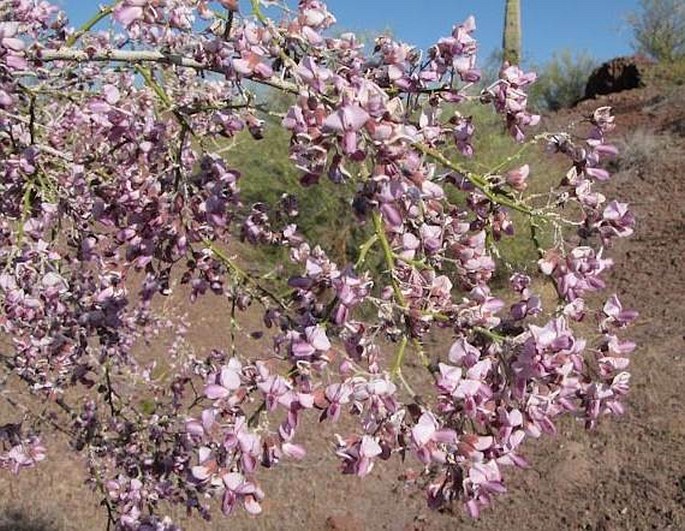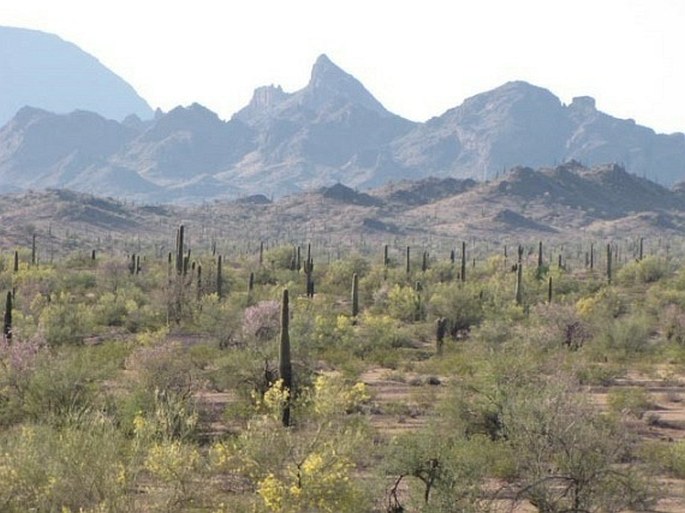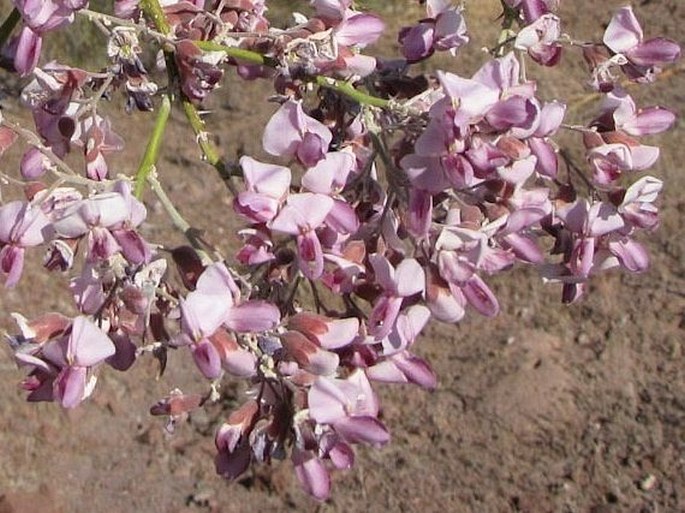Family: Fabaceae Lindl.

Distribution: Southern Arizona, western California, Mexico – Sonora and Baja California. The only species of this monotypic genus.
Ecology: Dry locales below 2,500 feet, where freezing temperatures are uncommon, in dry seasonal washes. It creates a micro-habitat with less direct sunlight, lower surface temperatures, more organic matter, higher water availability and therefore, it has immense ecological value in the Sonoran Desert. Blooms April to June.

Description: Large shrub to single trunk to multi-trunked tree up to 10 m tall, with bark grey on young branches, later becoming coarse and creased, eventually shredding on older trees. Leaves are pinnately compound on a petiole about 15 cm long with 6–9 but up to 15 leaflets, 1–2.5 cm long; at the base of the petiole of the compound leaf grow 2 thorns about 1 cm in size. Flowers are typical pea-like structure of the banner, 2 wings and the keel, about 2 cm across, pink or mauve to purple. Fruit is a legume. The seedpod is 5–8 cm long, reddish brown in colour. The seeds are bean-like, 1–4 to a legume and ripen at a time when very few plants produce seeds.
Notes: One of the oldest trees in existence; trees over 200 years old can have trunks 60 cm in diameter. With abundance of water the tree is evergreen, however in the desert, it drops leaves before it blooms and leafs out again during summer monsoons.


These images were taken in USA, Arizona, Gila Bend Mountains (May 2009).


